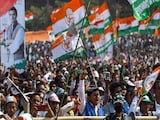On the 24 of June 1999 the Indian Air Force dropped its first Laser Guided Bomb (LGB) in anger. The release was from a Mirage 2000 and I was privileged to have been the pilot in command. In the days that followed, I was honoured to drop four more LGBs, thus dropping 5 out of the total of 8 LGBs delivered by the Mirage 2000 in the Kargil Conflict. This is my story.
Adampur is a major Air Force Base in Punjab and I had been deployed there since 22 May, 1999, for Operation Safeed Sagar, which was the Indian Air Force's moniker for its Air Operations in Kargil. I was then a Wing Commander and posted as the Station Flight Safety and Inspection Officer of Air Force Station, Gwalior where the Mirage 2000 is based. I had just over 1900 hours on the Mirage and was an Experimental Test Pilot with bags of experience. The Battle Axes were deployed at Adampur and I had been attached to the unit as an "Augementee" along with a few other officers from other units of the IAF.
On the evening of 22 June, we were tasked to attack Tiger Hill with LGBs the next morning. I was selected to captain a two-seater with Sqn Ldr Monish Yadav as my back seater. The target was a set of enemy tents perched at the top. We got airborne in a two aircraft formation at 6:30 am. The join up was uneventful and we maintained R/T silence as we winged our way to the target.
Tiger Hill is unique in shape and size when viewed from the ground. But from 30,000 ft up, it is indistinguishable from the other tall peaks in the vicinity. The only mountain that stands out in this grand vista is K2, Mount Godwin-Austen, which at 28,2510 ft, towers over its surroundings. The aids on board the Mirage allowed us to spot Tiger Hill with relative ease. We had it in contact by 50 km and were unpleasantly surprised to find a tiny cloud perched right on its tip obscuring the expected point of impact and rendering the LGB impotent. The endurance of the Mirage allowed us to hold on station for about 30 minutes, so we went around three more times, hoping the cloud would drift away and we could complete our mission. In the fourth attempt, as we turned away from the target, Monish yelled at me to "flare left", indicating a missile launch. I instantly throttled back to idle power and hauled the aircraft upward in a steep left turn and commenced dropping flares. I did not spot the tiny shoulder-launched missile, but Monish did see it climb towards us and thereafter fall away as we were outside its envelope. We had no choice but to go back with our armament load and prepare for a reshoot the next day.
On the 23rd afternoon, we were informed the Chief of Air Staff would be at Adampur so we spent the rest of the day tidying up the squadron premises for the visit. The CAS landed in the evening and was keen to fly and observe the first LGB drop. The mission profile was revised and the Commanding Officer was scheduled to fly the CAS in a third two seater, while the remaining formation was unchanged.
The plan was for a three aircraft mission with the two lead aircraft armed with an LGB each, while the third aircraft would follow behind with the CAS in the backseat. The plan was to hit Tiger Hill first and then proceed to recce point 4388 located 30 km Northwest of Tiger Hill. By 6 am, we had walked to the aircraft. Walking to the aircraft is a tedious task in war time. We were overloaded with our G-suits, helmets and had to lug our Makarov 9mm pistols along with the various essential items necessary for a successful sortie.
Tiger Hill was spotted from about 50 km distance in the Litening Pod and we were thrilled to see there was not a speck of cloud around. Things then moved forward at a rapid pace. I had altered heading to place the aircraft track directly at a set of seven Artic tents perched precariously on the South face of Tiger Hill. The white tents made good camouflage sense in winter, but in summer, with most of the snow melted away, they stood out in stark contrast against the black rock formation. Tiger Hill is at an altitude of 16,600 ft, and the pre-briefed altitude for the attack was 28,000 ft, to which we quickly descended. A glance at the navigation displays indicated that the winds at this altitude was 70 kts in a westerly direction and at 90 deg to our planned track. This was excessive and outside the release envelope for the LGB. Going up was not an option as the Laser was known to switch off automatically at around 30,000 ft. A different direction was also not viable as the target would be shadowed. A quick decision was therefore taken to descend down to 26,000 ft. We had infra-red flares with us to deflect incoming missiles and considered going down an operational risk which we were willing to take.
At 28 km, I pulsed the laser to designate the target for the first time. The Litening Pod instantly ranged the distance to target. We had by then accelerated to a ground speed of 550 kn (~1000 kmph) and the distance to the release point rapidly reduced. I repeatedly re-designated the target as it became more discernible when we closed in. At the release range, I pressed the trigger and we felt the aircraft jerk upwards as it suddenly shed 600 kg of load. I immediately commenced a hard turn to the left at 4g and started flaring. Monish took over pod steering and pointed the laser directly at the target while I concentrated on the turn and monitored the video image. The Laser was steadily flashing and we waited anxiously for the target to explode thus signalling a successful delivery. The time of flight of an LGB under the delivery conditions that we had dropped it in was under 30 sec, but to us in the cockpit it appeared as an eternity. Our joy knew no bound as the entire video image of the target burst out into a soundless explosion.
I had by then rolled out on a westerly course and reversed right climbing back to 30,000 ft and monitored the air navigation system with the other strike aircraft. The plan was to gather together and then set course for Pt 4388. I noticed the distance between the two of us had started to build up as we turned towards the Northwest. Our faithful escorts from 1 Squadron were however with us so we decided to press on with the remaining mission. On return, 15 minutes later, we routed back via Tiger Hill to film the Hill from close to assess the damage. The target area had been blown to smithereens, so we filmed the rest of the hill for any other visible signs of the enemy.
After landing, we extricated the video tape from the Litening Pod and headed to the crew room for the debrief. The entire squadron was gathered around the TV as the tape was rewound and played back. Clearly visible on the tape were four enemy soldiers rushing across the screen a few seconds before the bomb got to them. The video on the way back also revealed a person 2,000 ft below the hill top climbing painstakingly upward to the camp.
(Air Marshal Raghunath Nambiar is the Air Officer Commanding in Chief of the Indian Air Force's Western Air Command and an experienced Mirage 2000 fighter pilot)
Disclaimer: The opinions expressed within this article are the personal opinions of the author. The facts and opinions appearing in the article do not reflect the views of NDTV and NDTV does not assume any responsibility or liability for the same.















